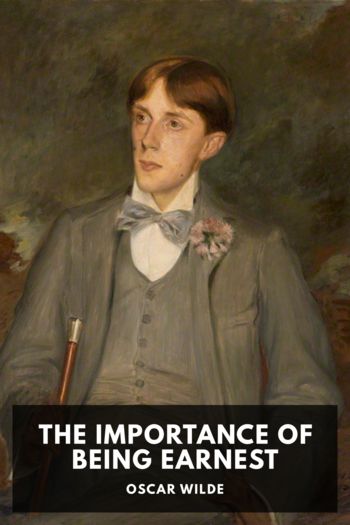Living History, Unknown [books to read in your 20s female TXT] 📗

- Author: Unknown
Book online «Living History, Unknown [books to read in your 20s female TXT] 📗». Author Unknown
The first piece of legislation Bill signed into law in 1993 was the Family and Medical Leave Act, sponsored by Democratic Senator Christopher Dodd of Connecticut, which allowed millions of working people to take up to twelve weeks o£ unpaid leave for family emergencies or to care for a family member who was sick, without fear of losing their jobs. Millions of Americans took advantage of the protections of the law and discovered the profound difference it made in their lives. A woman in Colorado wrote me that her husband had recently died of congestive heart failure after several years of illness. Under the Family and Medical Leave Act, she had been able to take time off from work to transport him to doctor appointments and hospital visits, and to comfort him at the end.
She did not have to spend the critical last months of her husband’s life worrying that she would not have a job after he died.
I urged my staff to come up with ideas to improve the law, and we worked with the Department of Labor, the Office of Personnel Management and the National Partnership for Women and Families to modify family and medical leave so that federal workers could use up to twelve weeks of accrued paid sick leave to care for an ill family member.
I hoped this federal system would become a model around the country, and I pushed for a regulation permitting states to use their unemployment insurance system to offer paid leave to new parents. At least sixteen state legislatures were considering such proposals when the Bush Administration eliminated the regulation, foreclosing an avenue of support for new parents.
Proposed bankruptcy reform moving through Congress threatened to undermine the spousal and child support many women depended on. The number of Americans filing for bankruptcy had risen 400 percent in twenty years, a staggering statistic with important implications for our nation’s economic stability. Were a growing number of Americans simply using bankruptcy as a financial planning tool to escape mounting personal debts?
Was the rise due to an irresponsible banking and credit card industry that solicited, and recklessly approved, unqualified cardholders? Or were responsible Americans facing mounting personal expenses that they simply could not manage on their own, such as health care bills that were not covered by insurance? How politicians answered these questions drove the policy solutions they favored. Those who believed that the credit card industry was largely to blame for the increased debt carried by Americans favored solutions that limited aggressive tactics to sign up cardholders who were known credit risks.
Those who thought that people were using the system to avoid paying debts they rightly owed preferred solutions that would make it more difficult to declare bankruptcy or would limit the amount of debt forgiven in bankruptcy cases.
Missing from this debate, I discovered, was any discussion of what happens to women and children who depend on legally required child and spousal support that is not being paid. Hundreds of thousands of bankruptcy cases were bringing women into court because they were trying to collect child and spousal support withheld from them by deadbeat dads and ex-husbands who had declared bankruptcy. I recognized that changes in the bankruptcy law would have profound implications for women and families. In cases of bankruptcy, credit card companies wanted unpaid credit card bills to have the same priority as spousal and child support obligations. That meant that single women would have to compete with Visa and MasterCard to collect legally owed child support. I believed that child support obligations should come first and that bankruptcy reform must be balanced, expecting more responsibility from debtors and creditors alike. In 1998, 1 weighed in on the President’s decision to veto one version of the bill that disproportionately favored the credit card industry over consumers, and later I worked with members of Congress to enhance the law’s consumer protections and to add provisions to protect women and their families. In the Senate, one of the first measures I passed increased protections for women and children.
Women’s economic empowerment also meant continuing the fight for equal pay and retirement security. Women are still not being paid equally to men, and many working women do not receive any or adequate income from pensions but rely on Social Security.
The structure of Social Security is based on outdated notions of women as secondary breadwinners, or not as breadwinners at all. The payment that a person receives is determined by the contributions that he or she makes during his or her years of employment.
Most women not only earn less than men and often do not receive private pensions, they are more likely to work part time, spend time outside of the labor force and live alone in their retirement years because, on average, they live longer than their husbands. For many elderly women, Social Security is all that stands between them and abject poverty. Determined to preserve the solvency of this essential safety net, I chaired a panel at the White House Conference on Social Security in 1998 to explore the system’s structural discrimination against women.
Women and children also suffer from inequities in our health care system, one of my original motivations to work on reform. I led the Administration’s efforts to end the practice of “drive-through deliveries,” in which hospitals discharged new mothers twentyfour hours after giving birth. Now, women can stay for forty-eight hours after a normal delivery and ninety-six hours after a cesarean section.
Inspired by the life of AIDS activist Elizabeth Glaser, I also began working for better testing and labeling of pediatric drugs, including drugs to treat children with HIV/AIDS. I first met Elizabeth at the Democratic convention in 1992, where she spoke movingly about having contracted HIV through a blood transfusion while giving birth to her daughter, Ariel, in 1981. Unaware that she was infected, Elizabeth passed the disease on to her daughter through her breast milk and later to her son, Jake, in the





Comments (0)